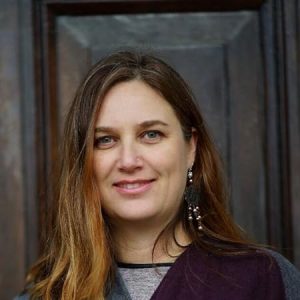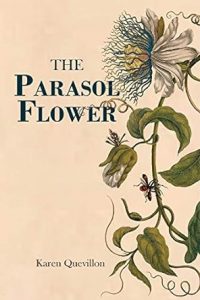How to Not-Write: 5 Ways to Advance Your Literary Work through Means that Aren’t Normally Considered Writing
How to Not-Write: 5 Ways to Advance Your Literary Work through Means that Aren’t Normally Considered Writing
 Like most writers, I spend my days not writing. We spend them working at jobs that can pay the bills.
Like most writers, I spend my days not writing. We spend them working at jobs that can pay the bills.
Also, and I think this is especially the case for women writers, we spend them caring for other people. Our young children, our elderly parents, our spouses, our teens and their pet lizards. We help out friends, volunteer for the school fundraiser, bang out the family grocery list, tidy our homes all over again, and launch a small cupcake business on the side.
In this fray, writing must take a back seat, deferred, or squished into the margins of our weeks and months.
I confess that I have spent far too much time angsting after and trying to “solve” the problem of rigging up the ideal conditions to write—for me, an unbroken block of time at a desk of my own, with music softly playing and no interruptions.
Yet it has always been the case that works are accomplished under non-ideal conditions. J.K. Rowling, for example, wrote the first Harry Potter book out longhand, bit by bit, sitting in cafes while her infant daughter slept in her pram. Accept that life may never be even close to ideal, then make the most of your particular situation.
When you can’t write, try not-writing. What I mean by this is, advance your literary work through multiple, sometimes nefarious, means that aren’t normally considered “writing.” For example:
- Carry a notebook and jot things in it periodically. What you jot down might turn out to be a crucial idea that sparks an essay, an image that develops into your novel’s twist ending, or the first verse of poem. A jot is versatile because it can happen anywhere, such as when riding an elevator, or parked in the car waiting for your kid to come out after basketball practice.
- Read widely. Reading is good, solid not-writing because it builds and maintains writing skills. Through it, you’re appreciating craft, learning from others, researching, gaining inspiration, and extending and refreshing your vocabulary. The beauty about reading is that it takes so much less energy than writing.
- Use note-taking in times of uncertainty or low energy. Say, for example, you’re not sure how long your baby will nap. Writing under that kind of pressure can scupper your creative juices. Instead of trying to draft the meet-greet scene in your novel, you could make a list of the plot points for it, or a list of details that bring character Jonathan to life (close-cropped beard, hipster jeans, scar on his left ankle from that skiing accident…).
- Engage in marketing, networking and socializing as forms of not-writing that you can do even if you’ve not published a single thing yet. Whether you love it or you hate it, it’s legit not-writing to be tweeting or blogging (like this!) or having a bit of fun at a conference or within a writing course or community. These things are generally lightweight, motivational, and amenable to multi-tasking. Let’s face, you’re probably scrolling through LinkedIn or Facebook anyway, from time to time.
- Give time and space to all the stuff in your head that serves your project’s development. Imagining can be done at any time, anywhere, without anybody really knowing, and it’s a necessary part of the writing process. So much of creative writing, including creative nonfiction, requires the invention of a sufficiently detailed storyworld before or apart from even telling the story. Let the inner movie play. Daydream of the place, dwell inside the dilemmas, listen to your hunches, hear the characters in conversation, allow your unconscious to do its work. Virginia Woolf is quoted as saying, “As for my next book, I won’t write it till it has grown heavy in my mind like a ripe pear; pendant, gravid, asking to be cut or it will fall.”
Ultimately, of course, we will want and need to spend time writing—cutting the ripened fruit from us, to follow Woolf’s beautiful metaphor. (And yes, that process will likely be painful.) Then ultimately after that, and with God’s grace, we will have a fruit to give the world.
There are other ways of not-writing besides the ones that I have mentioned here, and I would love for you to tell me about them. There are many means and ways of writing too.
For us, as women writers, I hope you will join me in appreciating how powerful not-writing can be. At least, how much more powerful than not writing.
—
Karen Quevillon has heavily not-written for as long as she’s been writing, about fifteen years now. She is a single parent with a messy teenage son, a job with too much overtime, and a two-hour daily commute. Her first novel, THE PARASOL FLOWER (Regal House) won the Hamilton Literary Award for Fiction She has published short fiction and poetry in numerous literary magazines, and too infrequently blogs about writing craft at theartofwriting.ca. Karen earned a PhD in Philosophy from Northwestern University.
THE PARASOL FLOWER
 In contemporary Paris, Nancy Roach is fed up with her flagging dissertation research and flees to the English countryside to escape the mounting pressure from her dissertation advisor. There, she stumbles upon an illustration of “The Parasol Flower” in a nineteenth-century treatise, which draws her into the life of Hannah Inglis, a talented artist who slipped out of art history and into the Malaysian wilderness. Working from Hannah’s letters and a cache of paintings, Nancy attempts to reconstruct a pivotal year in Hannah’s life. The year is 1896 and Hannah Inglis, a painter, is pushing back against her husband and their circle of ex-patriot friends in British Malaysia, who see her art as an uncivilizing influence. She finds support from two unlikely sources—the intimidating Eva Peterborough, an evolutionary biologist, and the Sikh police sergeant Darshan Singh who assists on treks to paint en plein air. With their help, she embarks on a search for a rare and legendary specimen—a flower that blooms as big as a lady’s parasol. The Parasol Flower traces the borders of science, art, race, and class and establishes new boundaries.
In contemporary Paris, Nancy Roach is fed up with her flagging dissertation research and flees to the English countryside to escape the mounting pressure from her dissertation advisor. There, she stumbles upon an illustration of “The Parasol Flower” in a nineteenth-century treatise, which draws her into the life of Hannah Inglis, a talented artist who slipped out of art history and into the Malaysian wilderness. Working from Hannah’s letters and a cache of paintings, Nancy attempts to reconstruct a pivotal year in Hannah’s life. The year is 1896 and Hannah Inglis, a painter, is pushing back against her husband and their circle of ex-patriot friends in British Malaysia, who see her art as an uncivilizing influence. She finds support from two unlikely sources—the intimidating Eva Peterborough, an evolutionary biologist, and the Sikh police sergeant Darshan Singh who assists on treks to paint en plein air. With their help, she embarks on a search for a rare and legendary specimen—a flower that blooms as big as a lady’s parasol. The Parasol Flower traces the borders of science, art, race, and class and establishes new boundaries.
BUY HERE
Category: On Writing























